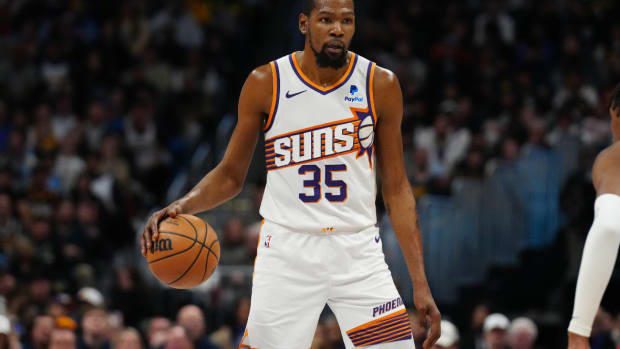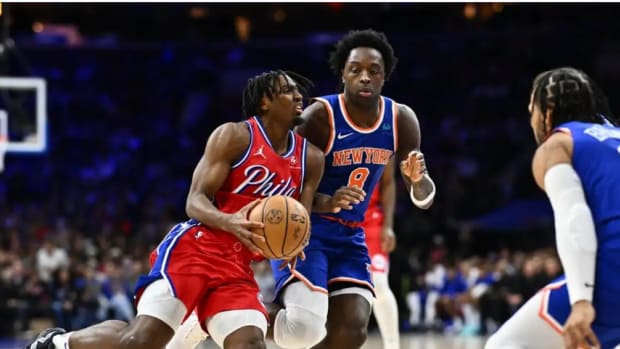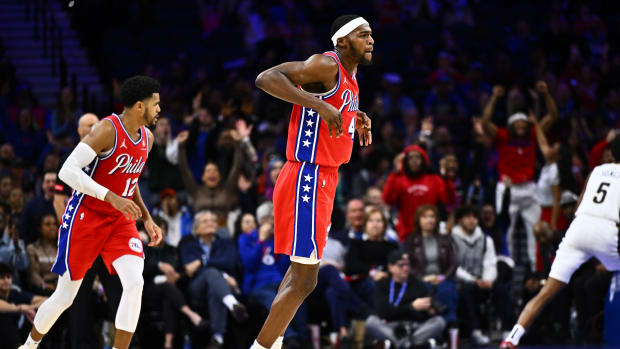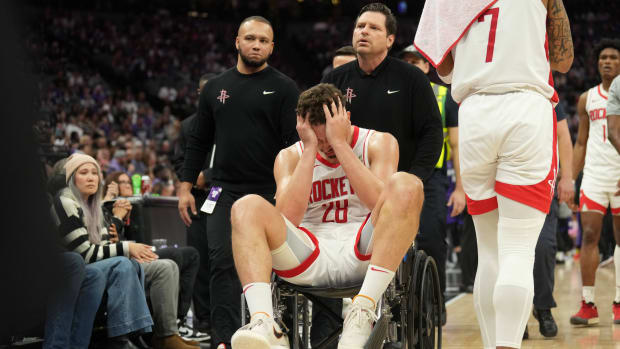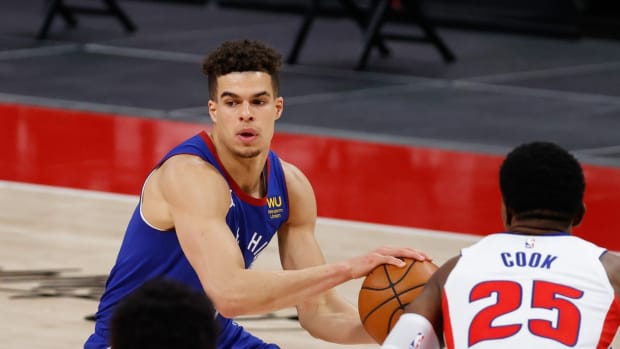Data Dimes: Draymond’s struggles at the heart of Golden State’s troubles
Get all of Ben Leibowitz's columns as soon as they’re published. Download the new Sports Illustrated app (iOS or Android) and personalize your experience by following your favorite teams and SI writers.
It didn’t take a suspension for Draymond Green to be taken out of the Western Conference Finals. Green was permitted by the league to play in Game 4 against the Oklahoma City Thunder after kicking Steven Adams in the groin in Game 3 (inadvertently or otherwise), but the Defensive Player of the Year runner-up all but disappeared on the court regardless.
In two road blowouts, Green’s combined plus/minus cratered to -73 — the worst mark in the postseason over a two-game span dating back to 2000, per ELIAS.
So what’s gone wrong for Green of late? The folks at PointAfter, a sports data visualization site, broke it down.
More from PointAfter (Graphiq network): All-Time Rosters for Every NBA Franchise | Re-Picking the 1996 NBA Draft | Ranking the Best MVP Seasons in NBA History
Oklahoma City Blues
Through Game 4 of the series against OKC, Green is averaging 11.3 points, seven rebounds, four assists and 3.3 turnovers per game. He’s shooting 33.3% from the field and 16.7% from long range. During the two playoff series prior, Green averaged 17.7 points, 10.4 rebounds, seven assists and 2.4 turnovers while shooting 44.9% from the field and 41.7% from beyond the arc.
Draymond Green's 2016 Playoff Game Log | PointAfter
In the Game 4 shellacking, Green had as many turnovers and missed shots (six) as points. After scoring in double figures in 11 of Golden State’s first 12 postseason games, Green fell short of that by scoring just six points in back-to-back contests on the road at Chesapeake Arena. The length of Oklahoma City’s defense has caused the Warriors a number of problems, particularly when Kevin Durant has defended Green.
KD has used his lanky frame to frustrate Green into poor play — forcing him into contested shot attempts and into coughing up the ball. With so many missed threes against that matchup, the logical conclusion would be for Green to attack the basket in order to draw contact, get easy points at the charity stripe and burden his opponents with foul trouble. But in the 2016 playoffs overall, his three-point rate is down compared to last postseason, while his free-throw rate is up, according to Basketball Reference. There’s very little to suggest that Green isn’t putting himself in a position to succeed, or that he needs to adjust his game in some fashion to get back to his normal self. The defense from OKC has simply been too jarring with its length and athleticism.
OKC Doesn’t Fear Death
In addition to Green’s individual struggles, the aptly named “Lineup of Death” — featuring Steph Curry, Klay Thompson, Andrew Iguodala, Harrison Barnes and Green at center — hasn’t been anywhere near as deadly in this series. The small-ball lineup that gave opponents fits all season long has been man-handled at times by Oklahoma City. The decision to play small has left the Warriors vulnerable on the boards, and OKC has taken advantage with its size.
2016 Western Conference Finals Breakdown | PointAfter
If you open the rebounds tab in the visualization above, you can see the Thunder have dominated on the glass. They out-rebounded the Dubs in Games 1, 3 and 4. No surprise, they won all three of those affairs. But what is perhaps most impressive about the Thunder’s consistent ability to beat up the Warriors on the glass is that their success hasn’t been tied to one guy.
OKC's Glass-Cleaning Trio (Through WCF Game 4) | PointAfter
Durant, Serge Ibaka and Steven Adams are all amassing more than eight rebounds per game in the Western Conference Finals. Green, the team leader in the category for Golden State this series, is averaging seven per contest. By frustrating Green into sub-par performances, Oklahoma City has effectively cut Golden State’s elite small-ball rotation off at the knees — further ensuring its evident height advantage. The rebounding battle has been the difference between wins and losses in the series thus far, perhaps meaning that going small against Adams, Ibaka, Kanter and Durant is a fool’s errand.
Granted, it would be foolhardy to count out a 73-win team even though it now faces a 3-1 series deficit. A turnaround depends on Green to return to form, and he no doubt knows what’s at stake.
“I bring the energy to this team, and I have not been there,” Green said, per Monte Poole of CSN Bay Area. “I know I’ve got to be better in Game 5. It’s all or nothing.”






























